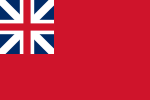Sayreville War Memorial High School

Sayreville War Memorial High School (SWMHS) is a four-year public high school located in the Parlin section of Sayreville, in Middlesex County, in the U.S. state of New Jersey, serving students in ninth through twelfth grades as the lone secondary school of the Sayreville Public Schools district. The school is home to the Sayreville Bombers, who are best known for their varsity football and track program. Sayreville's colors are blue and grey. The name "War Memorial" recognizes the World War II veterans who reside in the borough. The school has been accredited by the Middle States Association of Colleges and Schools Commission on Elementary and Secondary Schools since 1946.As of the 2020–21 school year, the school had an enrollment of 1,755 students and 135.6 classroom teachers (on an FTE basis), for a student–teacher ratio of 12.9:1. There were 504 students (28.7% of enrollment) eligible for free lunch and 128 (7.3% of students) eligible for reduced-cost lunch.
Excerpt from the Wikipedia article Sayreville War Memorial High School (License: CC BY-SA 3.0, Authors, Images).Sayreville War Memorial High School
Washington Road,
Geographical coordinates (GPS) Address Nearby Places Show on map
Geographical coordinates (GPS)
| Latitude | Longitude |
|---|---|
| N 40.46277 ° | E -74.323919 ° |
Address
Washington Road
Washington Road
08859
New Jersey, United States
Open on Google Maps




